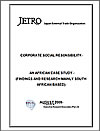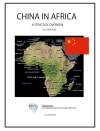 Egyptian National Railways (ENR)
Egyptian National Railways (ENR)
All data are collected in the Fiscal Year of 2008-2009.
Company Profile and History
The first part of the railway between Alexandria and Kafer Eassa was opened in 1854, and the line was completed two years later representing the first railroad in Africa and in the Middle East. The Imbaba Bridge was constructed in 1891 to allow trains to cross the Nile near Cairo, a key step to connect Lower and Upper Egypt. The contemporary Imbaba Bridge was erected in 1924 and represents the only railway crossing of the Nile in Cairo. The El Ferdan Railway Bridge rebuilt in 2001 is the largest swing bridge in the world and crosses the Suez Canal.
The Palestine Railway linked El Kantara (East) with Palestine and Lebanon. It was built in two phases during the First and Second World Wars and in 1916, it was extended to Rafah on the border with Palestine as part of campaigns against the Ottoman Empire. The route was extended along the Mediterranean coast to link with Turkish Railways in 1940 and became a vital part of the supply route for Egypt.
Egypt has a railway network of approximately 6700 km.
In Country Location
Egyptian National Railways (ENR), Ramsis Square, Cairo, Egypt;
Phone number: 5753555
Services and Products
Passenger transport, which accounted for 94 percent of the ENR’s physical activity and 67 percent of traffic revenue in FY2007, is the railway’s predominant activity.
Intercity Passenger Services: Long-distance, high-quality services (in terms of comfort’ and speed) operate between Cairo and Alexandria (18 pairs of trains per day, some continuing to Marsa-Matrouh), and between Cairo, Luxor and Aswan (twelve pairs of trains). Intercity services offer First and Second class services, all air-conditioned and sleeping services on routes to Aswan.
Express Services: Long-distance, lower-quality services that utilize non-air-conditioned coaches and operate at lower speeds. They serve medium- and large-sized cities on routes that are also served by intercity services, and provide services in the Nile Delta, including from Cairo to Damietta, Cairo to Port Said, Cairo to Suez, Alexandria to Damietta, and Alexandria to Port Sai'd.
Local Services: Although they cover short distances and are of low quality, local services serve an important social dimension by connecting lower-income residents of rural communities with cities and markets. Services are offered on ten routes - nine in the Nile Delta and one in Upper Egypt.
Suburban Services: Suburban services are operated by the ENR in the Cairo and Alexandria areas.
Special Services: ENR also operates special passenger services for the military (almost 90 percent of the services), police, and some factories. This activity is marginal, accounting for only four percent of total seat-km and total passenger revenue.
Freight Transport Services: Although rail freight transport represents just six percent of ENR’s total traffic volume and current rates are very low, freight traffic provided about 18 percent o f revenues in FY2007. The ENR mainly transports mineral resources, including iron ore, phosphate, and clay, coal and coke for the steel industry, petroleum products, and imported wheat and containerized goods across the “land-bridge” from the Red Sea in the east to the Mediterranean Sea in the north.
Cairo Underground: Cairo Underground is the first in Africa and the Middle East. Currently there are two working lines, LINE-1 (New El-Marg to Helwan) and LINE-2 (Qalubeya to Mounib). LINE-1 forms the backbone of the Metro network in Cairo as it passes through the most important residential and business districts of the city. The line was formed by connecting the existing railway line from Helwan in the South to the existing railway line in Marg in the North East. The total length of the line is 44 Km including 35 stations. The length of the underground section is 4.5 Km including 5 underground stations. It carries about 1.4 million passengers daily using over 46 trains. LINE-2 extends from Shoubra to El-Monib with a total length of 19 km and 21 stations. Line-2 provides interchanges with Line 1 at Mubarak and Sadat stations. It also provides interchanges with the Egyptian Railways at Shoubra, Mubarak and Giza (Station) Stations. It carries about 0.7 million passengers daily using over 35 trains.
Number of Employees
86,000 people
Financial Information
During the 2000-2007 period, ENR generated an accumulated deficit of EGP 6.53 billion (equivalent to US$1.18 billion), almost equivalent to its cumulated gross revenue (EGP 7.24 billion). Its operational deficit totalled EGP 3.91 billion over the same period, and interest totalled EGP 3.83 billion. ENR revenue was not able to finance needed investments in infrastructure and rolling stock, let alone repay investment loans provided by Egypt’s National Investment Bank (NIB), Egypt Central Bank, and foreign banks, which amount to a total of about EGP 12 billion.
Market Share
The railway sector plays a significant role in the Egyptian economy and is an essential mode of transport for low-income Egyptians. The network, sixty percent of which is concentrated in the Nile Delta and along the Nile Valley, reaches most of the population- even relatively small population centres, which are served by minor lines and small, poor quality trains.
The Egyptian rail sector differs from its regional counterparts in several ways. First, its operations are large. Total traffic (passengers and freight) in FY2007 amounted to 68 billion traffic units, which exceeded the combined traffic of railways in Algeria, Iran, Morocco, Tunisia and Turkey. Second, ENR is a predominantly passenger railway, as passenger traffic accounts for more than 90 percent of ENR’s physical activity. In contrast, passenger traffic on other railways in the region average between 30 percent and 42 percent.
Business Objective
To restructure operations to create safer, more dynamic, responsive, and competitive rail services, while continuing to provide transport services to poor people and remote areas under Public Service Obligation (PSO) arrangements.
Business Model
Railway operations became a matter of deep concern to the Government in the 1990s and early 2000s due to several issues, in particular, acute safety issues, deteriorating quality of service, and the significant impact of the sector on the Government’s budget.
In order to address these challenges, the Government developed a strategy for the railway sector based on policy recommendations from the World Bank and with the assistance of an international consulting firm during 2006-2008. The Government is fully committed to a far-reaching transformation plan that will take several years to implement and will entail costly investments (about EGP19.7 billion over the FYOS-FY 16 period) to modernize ENR’s network and increase transport capacity, induce financial restructuring including the capitalization of ENR debt, and introduce a number of interrelated institutional reforms that will affect the legal and regulatory framework, financial relations with the Government based on financial compensation for PSOs, the restructuring of ENR’s organization along strategic business lines (Long-distance Passenger Services, Short-distance Passenger Services, Freight Services, and Infrastructure Services), and the private sector’s role in railway activities.
The objective of the proposed Egypt National Railways Restructuring Project (ENRRP) is to assist the Government in improving the reliability, efficiency and safety of the railways’ services through signalling and track renewal investments by the Egyptian National Railways (ENR) and the modernization of its management and operating practices in order to enhance the railways’ sector responsiveness to economic and social needs and to strengthen the financial viability of the Project Implementing Entity.
The ENRRP would finance key elements of ENR’s transformation plan, with particular emphasis on investments that are critical to improving operational efficiency and safety for passengers, and increasing revenue, as well as on initiatives modernizing management practices. The proposed Project consists of three components, and the overall financing of this Project amounts to US$305 million, of which (i) US$270 million IBRD financing; and (ii) U S$35 million counterpart financing from ENR’s resources.
Component 1-Signaling Modernization: The modernization of signalling along the Arab el-Ram1 to Alexandria line and a computerized Central Traffic Control system (CTC) for that section and Cairo - Banha (on the same Cairo-Alexandria line), and the supervision of those investments.
Component 2-Track Renewal: Priority track-renewal works for 200 km of track along the Cairo-Aswan line (149 km on four sections of track) and the Benha-Port Said line (5 1 km on two sections of track), and supervision of those works.
Component 3-Modernization of Management and Operating Practices: Activities under this component, which is being financed by ENR, are directed toward developing and cementing changes in managerial and staff practices that reflect the operational and financial restructuring of ENR.
Ownership of Business
Rail infrastructure is owned by, and rail services are provided by, the Egyptian National Railways (ENR), a public entity created in 1980 and reporting to the Ministry of Transport (MOT).
Benefits Offered and Relations with Government
The Government fully endorsed the transformation plan proposed by the Minister of Transport in December 2006, and the Minister of Finance has immediately provided a significant initial financial support though a budgetary transfer of EGP 5 billion in 2006.
The Minister of Transport Lotfi Mansour said on 15/4/2009 at a People's Assembly session that the Egyptian railways sector will not be privatized and that the prices of railways tickets will not increase.
Product Development
A consortium headed by Vinci Construction Grands Projets has been signed up in 2009 by Egypt’s National Authority for Tunnels to construct the second phase of Cairo metro Line 3, due to be running by October 2013. Phase 1, the responsibility of the same consortium, is 60% complete and scheduled to commence operations in October 2011. The phase 2 civil works contract includes 7.2km of tunnel between Abbasiya and Al Ahram, and four underground stations. Vinci subsidiary Eurovia Travaux Ferroviaires is to supply and install 14km of track. Fare collection equipment, integrated supervision and communications systems will be supplied by Thales.
E&M equipment for the four stations is to be designed and supplied by Alstom and SEP Colas. Alstom will supply Urbalis 200 train control, points machines and signalling equipment. Line 3, with 29 stations, running 33km from the airport to Imbaba, is projected to carry 5 million passengers per day by 2020.
In July 2009 the US Trade and Development Agency awarded a $658,323 grant to Egypt’s ministry of transport in Cairo, to support the development of a positive train control (PTC) system for Egyptian National Railways. PTC technologies and systems are expected to improve safety of operations, increase the capacity of the network-enabling additional traffic to be run over existing infrastructure-and optimise the operation, including management of trains and real-time adaptation to contingencies.
The introduction of PTC in Egypt builds on the findings of a USTDA-funded study completed earlier this year for the ministry of transport. The study included the design of a national traffic management master plan and recommendations on the creation of an independent railway safety oversight and enforcement authority to monitor compliance with safe operating practices.




